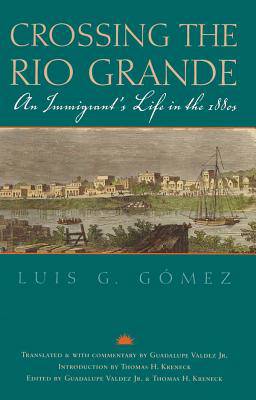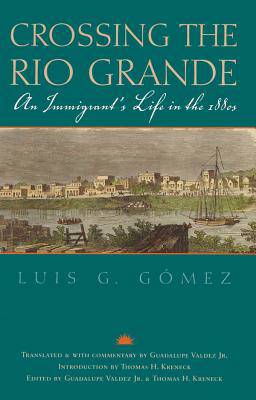
Je cadeautjes zeker op tijd in huis hebben voor de feestdagen? Kom langs in onze winkels en vind het perfecte geschenk!
- Afhalen na 1 uur in een winkel met voorraad
- Gratis thuislevering in België vanaf € 30
- Ruim aanbod met 7 miljoen producten
Je cadeautjes zeker op tijd in huis hebben voor de feestdagen? Kom langs in onze winkels en vind het perfecte geschenk!
- Afhalen na 1 uur in een winkel met voorraad
- Gratis thuislevering in België vanaf € 30
- Ruim aanbod met 7 miljoen producten
Zoeken
€ 23,95
+ 47 punten
Omschrijving
Although they are among the most important sources of the history of the American Southwest, the lives of ordinary immigrants from Mexico have rarely been recorded. Educated and hardworking, Luis G. Gómez came to Texas from Mexico as a young man in the mid-1880s. He made his way around much of South Texas, finding work on the railroad and in other businesses, observing the people and ways of the region and committing them to memory for later transcription. From the moment he crossed the Rio Grande at Matamoros-Brownsville, Gómez sought his fortune in a series of contracting operations that created the infrastructure to help develop the Texas economy-clearing land, cutting wood, building roads, laying track, constructing bridges, and quarrying rock. Gómez describes Mexican customs in the United States, such as courtship and marriage, relations with Anglo employers, religious practices, and the simple home gatherings that sustained those Mexican Texans who settled in urban areas like Houston, isolated from predominantly Mexican South Texas. Few of the 150,000 immigrants in the last half of the nineteenth century left written records of their experiences, but Gómez wrote his memoir and had it privately published in Spanish in 1935. Crossing the Rio Grande presents an English edition of that memoir, translated by the author's grandson, Guadalupe Valdez Jr., with assistance from Javier Villarreal, a professor of Spanish at Texas A&M University-Corpus Christi. An introduction by Thomas H. Kreneck explainss the book's value to scholarship and describes what has been learned of the publication history of the original Spanish-language volume. Valdez's comments provide a lucid and engaging picture of his grandfather's later life and his gentlemanly character. This charming little volume provides a valuable account of a relatively undocumented period in Mexican Texans' history. Almost unknown to those outside his family, this narrative has now been "recovered," edited by Valdez and Kreneck, and made available to a wider, interested public. Guadalupe Valdez Jr., who translated the Spanish original, is the grandson of Luis Gómez.Thomas H. Kreneck is the associate director for Special Collections and Archives and graduate lecturer in public history at Texas A&M University-Corpus Christi
Specificaties
Betrokkenen
- Auteur(s):
- Vertaler(s):
- Uitgeverij:
Inhoud
- Aantal bladzijden:
- 120
- Taal:
- Engels
- Reeks:
- Reeksnummer:
- nr. 9
Eigenschappen
- Productcode (EAN):
- 9781603448086
- Verschijningsdatum:
- 15/08/2012
- Uitvoering:
- Paperback
- Formaat:
- Trade paperback (VS)
- Afmetingen:
- 140 mm x 216 mm
- Gewicht:
- 158 g

Alleen bij Standaard Boekhandel
+ 47 punten op je klantenkaart van Standaard Boekhandel
Beoordelingen
We publiceren alleen reviews die voldoen aan de voorwaarden voor reviews. Bekijk onze voorwaarden voor reviews.









